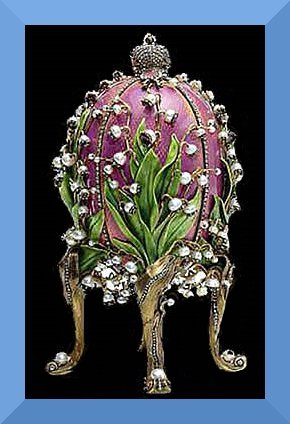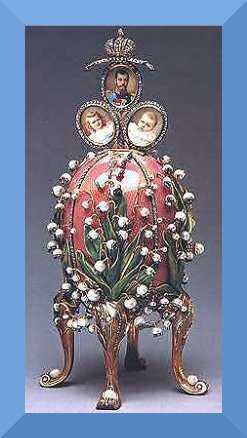
December 2010, Issue 11
Dollhouse Tourism, Russia
Page 78
 that were popular Easter gifts usually worn around the neck by lucky young ladies of means. Modern versions of these creations are still available in jewelry stores today with bejewelled, intricate detail, yet none so bejewelled or intricate as those commissioned by the last Russian Tsars.
that were popular Easter gifts usually worn around the neck by lucky young ladies of means. Modern versions of these creations are still available in jewelry stores today with bejewelled, intricate detail, yet none so bejewelled or intricate as those commissioned by the last Russian Tsars.
 These Faberge eggs are known throughout the world, as is the history of their creation. These eggs produced by the House of Faberge' are larger in size than the necklace creations, and were made for Tsars Alexander III and Nicholas II. There were a total of 50 made for Alexander and Nicholas, with two more planned but never delivered due to the Revolution and assassination of Tsar Nicholas and his family.
These Faberge eggs are known throughout the world, as is the history of their creation. These eggs produced by the House of Faberge' are larger in size than the necklace creations, and were made for Tsars Alexander III and Nicholas II. There were a total of 50 made for Alexander and Nicholas, with two more planned but never delivered due to the Revolution and assassination of Tsar Nicholas and his family.
The House of Faberge' began as the Imperial Jeweler for Tsar Alexander III. In 1885, Alexander commissioned a jeweled Easter egg for his wife, the Empress Maria Feodorovna. The first of these eggs had a shell of enameled gold, which opened to reveal a gold yolk. Inside this yolk was a small gold chicken, which itself opened to reveal a replica of the Imperial Crown. Suspended from the crown was a miniature ruby egg.
Copyright© 2010
Custom Dolls, Houses & Miniatures / CDHM







